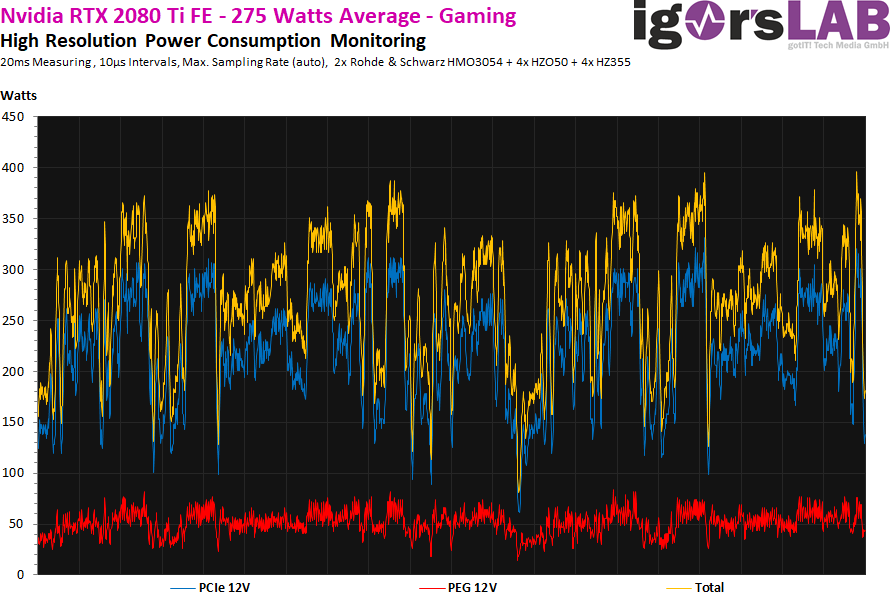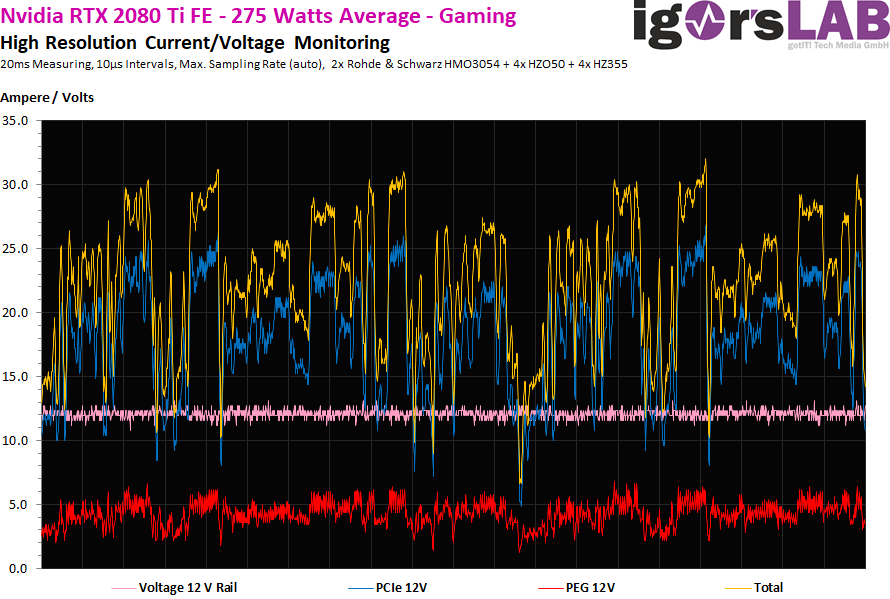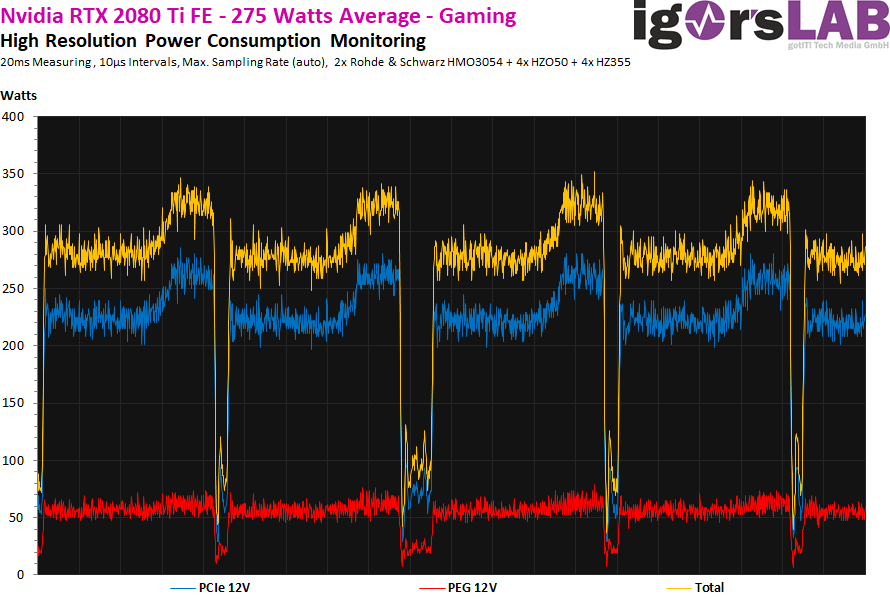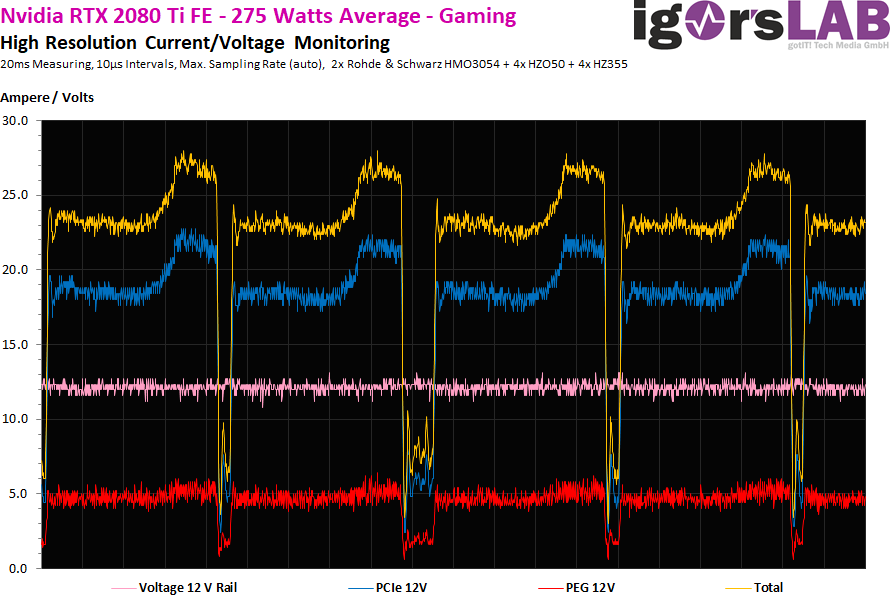I deliberately chose the GeForce RTX 2080 Ti to start here with a slightly higher average power consumption. Why, we’ll see in a while. Who by the way remembers – I had already written in detail about the changes at Nvidias Turing in the basic article “Nvidia GeForce RTX 2080 Ti – Internal details about the power supply, different components and where the spikes stayed!”
Measurements under maximum game load
You can get to the 400 watt limit here, but only in the microsecond range. With an increased average power consumption, one can see that there are also spikes up to 400 watts, but the regulation is much more delicate. The approx. 375 watts over a millisecond are the maximum here and you can also see that Turing regulates more often than Pascal, but it is much more finely graded.

The flowing currents always remain below 33 amperes, so that no power supply would have to give up prematurely. One could even speculate that Turing behaves much more unproblematic than Pascal, as long as the secondary side of the power supply is equipped with functional low impedance capacitors. ESR alone is not enough.

Measurements during the stress test
The stress test creates a very interesting picture for Turing. The length of the real load intervals is halved! Even if you can already for a single millisecond approx. 330 watts, it is then an average of approx. 300 watts. Then the card regulates for approx. 0.25 ms.

Even with the currents it becomes much more relaxed and you reach in the maximum only 28 amperes. This is now again significantly lower than what the GeForce GTX 1080 Ti delivered and at the same height as an RX Vega has achieved for a short time.

Intermediate conclusion
The new specifications from Nvidia for the voltage converters and the current expansion stage of Boost demonstrate very impressively how it can also be made quite easy for the power supplies. And yet even this card is hardly more restrained than a Radeon RX Vega64. So if you had to identify a culprit, it would be either all three subjects together, or none at all. The difference is certainly in the many details, but sensational-compatible outliers I did not find in red or green.

































Kommentieren